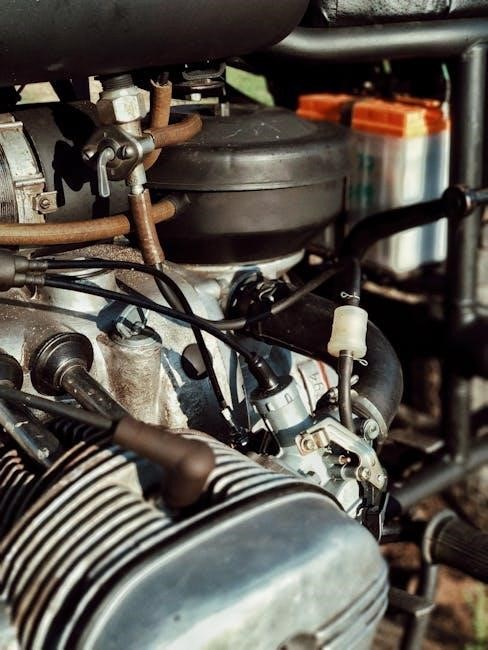Safety Precautions
Always wear protective eyewear and gloves when operating the Troy-Bilt 3000 PSI pressure washer. Ensure the area is clear of obstacles and keep children away. Avoid spraying flammable materials or electrical components. Never point the nozzle at people or animals. Use proper fueling procedures and store the unit in a well-ventilated area to prevent carbon monoxide buildup. Follow all safety guidelines outlined in the manual to minimize risks and ensure safe operation;
1.1 Essential Safety Tips
Always wear protective eyewear, gloves, and closed-toe shoes when operating the Troy-Bilt 3000 PSI pressure washer. Read the manual thoroughly before use to understand proper operation and safety measures. Ensure the area is clear of obstacles, children, and pets. Never aim the nozzle at people, animals, or delicate surfaces. Use the correct nozzle tip for the task to avoid damage or injury. Keep the pressure washer on a stable, level surface and avoid using it in wet or slippery conditions. Store fuel and chemicals in well-ventilated areas, away from open flames or sparks. Follow all warnings and precautions in the manual to ensure safe and effective operation.
1.2 Hazard Awareness
Be aware of potential hazards when using the Troy-Bilt 3000 PSI pressure washer. High-pressure jets can cause severe injury or damage. Electrical components pose shock risks if damaged or exposed to water. Hot surfaces, such as the engine, can burn skin. Flammable vapors from fuel or cleaning agents can ignite if not handled properly. Keep the area well-ventilated to prevent carbon monoxide buildup from the engine. Regularly inspect hoses and connections for leaks or wear, as they can fail under pressure. Be cautious of slippery surfaces created by water or cleaning agents. Understanding these hazards helps prevent accidents and ensures safe operation.
1.3 Safe Handling Practices
Always wear protective eyewear, gloves, and closed-toe shoes while operating the Troy-Bilt 3000 PSI pressure washer. Ensure the machine is on a stable, level surface before use. Never spray water at electrical components, open flames, or hot surfaces. Keep the nozzle at least 12 inches away from surfaces to avoid damage. Use the correct nozzle tip for the task to prevent excessive force. Avoid spraying in enclosed spaces without ventilation. Store the pressure washer in a dry, well-ventilated area, away from flammable materials. Regularly inspect hoses and connections for wear or damage. Proper handling ensures safe and effective use of the equipment.

Product Overview
The Troy-Bilt 3000 PSI pressure washer is a gas-powered, heavy-duty cleaning tool designed for efficient surface cleaning. It delivers up to 3000 PSI and 2.5 GPM, ideal for tough tasks.
2.1 Key Features of the Troy-Bilt 3000 PSI Pressure Washer
- Delivers up to 3000 PSI and 2.5 GPM for powerful cleaning performance.
- Equipped with five interchangeable nozzle tips for various cleaning tasks.
- Features durable pneumatic wheels for easy mobility on different surfaces.
- Includes a robust gas-powered engine for consistent and reliable operation.
- Designed with an ergonomic handle and compact frame for user convenience.
2.2 Technical Specifications
- Model Number: Troy-Bilt 020316.
- Maximum Pressure: 3000 PSI.
- Flow Rate: 2.5 GPM.
- Engine Type: Gas-powered with Briggs & Stratton engine.
- Weight: 178 lbs for easy mobility.
- Fuel Type: Regular gasoline.
- Fuel Tank Capacity: 1 gallon.
- Hose Length: 25 feet with 1/4″ diameter.
- Max Temperature: 140°F for safe operation.
2.3 Included Accessories
The Troy-Bilt 3000 PSI pressure washer comes with essential accessories to enhance its functionality. It includes five interchangeable nozzle tips (15°, 25°, 40°, and low-pressure soap tips) for various cleaning tasks. A sturdy 25-foot high-pressure hose is provided for extended reach. The unit also features a durable wand and spray gun with a comfortable grip. Additional accessories include a detergent tank for easy soap application and pneumatic tires for smooth mobility. These components are designed to ensure versatility and convenience, making it easier to tackle different cleaning projects effectively.
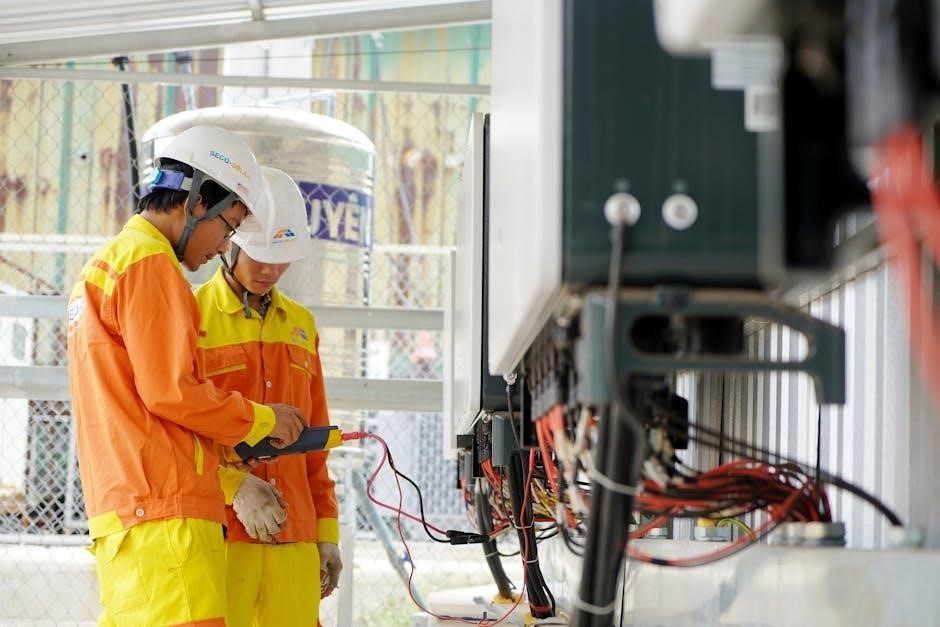
Assembly and Installation
Begin by carefully unboxing and inspecting all components. Attach the hoses and nozzles securely, ensuring proper connections. Install additional components as outlined in the manual. Finally, check fluid levels before first use.

3.1 Unboxing and Initial Setup
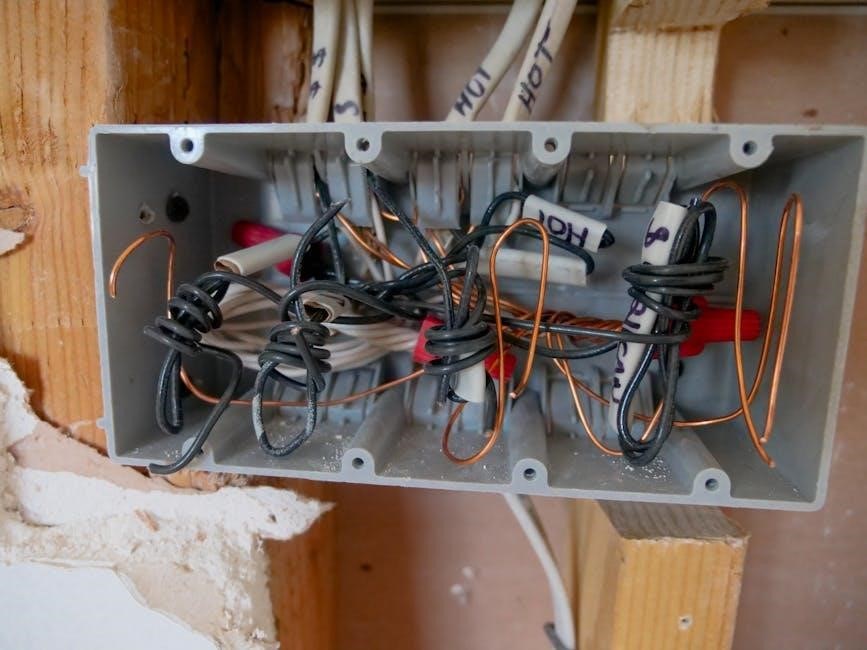
Start by carefully unboxing the Troy-Bilt 3000 PSI pressure washer and inspecting all components for damage. Ensure all accessories, such as hoses, nozzles, and wheels, are included. Familiarize yourself with the unit’s key features, including the engine, pump, and control panel. Before assembly, verify that the model number matches your purchase. Place the unit on a stable, flat surface and ensure the area is clear of debris. Review the manual to understand the initial setup requirements. Check for any loose parts and tighten them as needed. Finally, ensure all safety precautions are followed before proceeding to assembly or operation.
3.2 Attaching Hoses and Nozzles
To attach the high-pressure hose, connect one end to the pump outlet and the other to the spray gun. Ensure all connections are tightly secured but avoid over-tightening. Next, attach the desired nozzle tip to the spray gun by pulling the tip holder back and inserting the nozzle into the gun. Align the nozzle tip properly to ensure a secure fit. For specific tasks, use the appropriate nozzle tip (e.g., 25° for general cleaning or 0° for heavy-duty cleaning). Refer to the manual for detailed instructions on nozzle usage and torque specifications for connections; Properly attaching hoses and nozzles ensures optimal performance and safety during operation.
3.3 Installing Additional Components
Install additional components such as the detergent tank or spray tips by following the manual’s step-by-step guide. Ensure all parts are compatible and properly aligned. For the detergent tank, attach it to the designated bracket and secure it firmly. When adding spray tips, refer to the chart in the manual to select the correct tip for your cleaning task. Tighten all connections securely but avoid overtightening. After installation, test the components to ensure they function correctly. Proper installation of additional components enhances the versatility and efficiency of your Troy-Bilt 3000 PSI pressure washer, allowing you to tackle a variety of cleaning jobs effectively.
3.4 Checking Fluid Levels
Regularly checking fluid levels is crucial for the optimal performance and longevity of your Troy-Bilt 3000 PSI pressure washer. Always wear protective gloves and eyewear when handling fluids. Start by turning off the engine and allowing it to cool. Locate the oil dipstick under the engine and pull it out to check the oil level. Ensure it is within the recommended range specified in the manual. Next, inspect the gasoline level in the fuel tank and refill if necessary. Also, check the detergent tank to confirm it is filled with the appropriate cleaning solution. Never operate the pressure washer with low or insufficient fluid levels, as this can cause damage to the engine or other components. Refer to the manual for specific guidelines on fluid types and capacities.

Operating Instructions
Start the engine and allow it to warm up before use. Adjust the pressure setting based on the cleaning task. Use the appropriate nozzle tip for the surface being cleaned. Keep the spray wand moving to avoid damaging surfaces. Maintain a safe distance from the surface to prevent excessive wear. Follow the manual’s guidelines for optimal performance and safety.
4.1 Starting the Engine
To start the engine of your Troy-Bilt 3000 PSI pressure washer, ensure the fuel tank is filled with the recommended type of gasoline. Check the oil level and add if necessary. Locate the primer bulb and press it 2-3 times to ensure proper fuel flow. Move the choke to the “start” position and pull the recoil starter handle firmly until the engine starts. Once the engine is running, allow it to warm up for a few seconds before adjusting the throttle. Always wear protective gear and ensure the area is well-ventilated to avoid inhaling fumes. Refer to the manual for specific starting procedures if issues arise.
4.2 Adjusting Pressure Settings
To adjust the pressure settings on your Troy-Bilt 3000 PSI pressure washer, locate the pressure regulator knob. Turn the knob clockwise to increase pressure or counterclockwise to decrease it. Always start with the lowest setting for delicate surfaces and gradually increase as needed. For specific tasks, use the provided nozzle tips, which are color-coded to indicate different pressure levels. Ensure the engine is running smoothly before adjusting the pressure to maintain consistent output. Avoid exceeding the maximum pressure rating to prevent damage to the unit or surfaces being cleaned. Refer to the manual for guidance on optimal pressure settings for various cleaning tasks and to ensure safe operation.
4.3 Using Different Nozzle Tips
Your Troy-Bilt 3000 PSI pressure washer comes with multiple nozzle tips, each designed for specific cleaning tasks. The 0° tip is for heavy-duty cleaning at maximum pressure, while the 25° tip is ideal for lighter jobs. The 40° tip is best for general cleaning, and the soap tip is for applying detergents. Always use the correct tip for the task to avoid damage or inefficiency. To change tips, pull and twist the current nozzle until it detaches, then securely attach the new one. Ensure the tip is properly seated to maintain pressure and safety. Never use a damaged or worn-out nozzle tip, as it may reduce performance or cause leaks. For detailed guidance, refer to the manual or manufacturer’s recommendations.
4.4 Best Practices for Cleaning
Start by clearing the area of loose debris and sweeping surfaces to ensure effective cleaning. Divide large areas into sections for systematic cleaning. Maintain a consistent nozzle distance (12-24 inches) from the surface to avoid damage. Use the appropriate nozzle tip for the task, as outlined in the manual. For delicate surfaces, use lower pressure settings or the soap tip. Keep the nozzle moving continuously to prevent concentrating pressure in one spot. Avoid spraying windows, mirrors, or sensitive materials directly. Cover plants or sensitive areas to protect them from detergent or high pressure. After cleaning, rinse surfaces thoroughly and allow them to air dry to prevent streaks or mold growth.
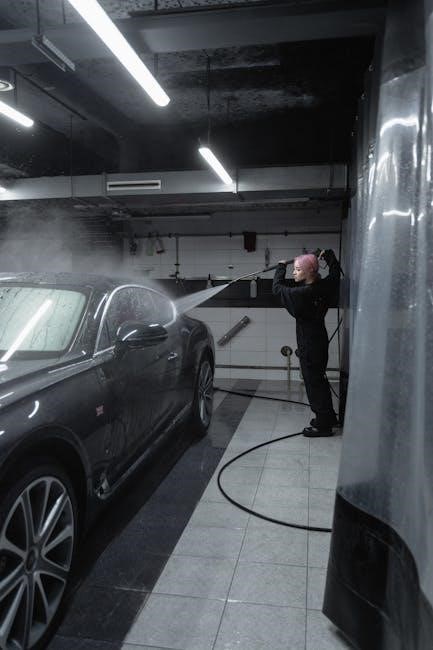
Maintenance and Upkeep
Regularly check and change the oil, inspect hoses for wear, and clean the filter. Winterize the unit by draining fluids and storing in a dry place. Ensure proper lubrication of moving parts and store accessories neatly to maintain performance and longevity.
5.1 Daily Maintenance Checks
Before each use, perform a thorough inspection of the Troy-Bilt 3000 PSI pressure washer. Check the oil level to ensure it meets the recommended level. Inspect the fuel line for any signs of damage or leaks. Examine the hoses and connections for wear or cracks. Verify that all nozzles are clean and free of blockages. Test the spray gun trigger to ensure proper function. Look for any loose bolts or fittings and tighten them if necessary. Also, inspect the air filter for cleanliness and replace it if it appears dirty. Addressing these issues daily helps prevent unexpected breakdowns and ensures optimal performance.
5.2 Storing the Pressure Washer
Proper storage of the Troy-Bilt 3000 PSI pressure washer is essential to maintain its performance and longevity. Before storing, drain the fuel tank or stabilize the fuel if storing for extended periods. Clean the exterior thoroughly to remove dirt and debris. Store the unit in a dry, well-ventilated area, away from direct sunlight and moisture. Use a high-quality cover to protect it from dust and environmental elements. Ensure the storage location is secure and out of reach of children. Regularly inspect the stored unit for any signs of damage or wear. Following these steps ensures the pressure washer remains in optimal condition for future use.
5.3 Winterizing the Unit
Winterizing your Troy-Bilt 3000 PSI pressure washer is crucial to protect it from freezing temperatures and ensure optimal performance in the future. Start by draining the fuel tank or using a fuel stabilizer to prevent corrosion. Disconnect and drain the hoses to remove any remaining water. Use a pump protector or add a small amount of antifreeze to the system to safeguard against freezing. Store the unit in a dry, insulated area to prevent exposure to cold temperatures. Cover the pressure washer with a durable cover to shield it from dust and moisture. Regularly inspect the unit during storage to ensure no damage occurs. Proper winterization extends the lifespan and maintains efficiency of the pressure washer.
5.4 Lubrication and Filter Care
Regular lubrication of moving parts and engine components is essential for the longevity of your Troy-Bilt 3000 PSI pressure washer. Apply the recommended lubricant to pivot points, seals, and gears to prevent wear and tear. Check the engine oil level before each use and refill as needed using the specified oil type. The air filter should be inspected and cleaned regularly to ensure proper airflow and engine performance. Replace the filter if it becomes damaged or clogged. Proper lubrication and filter maintenance prevent overheating, reduce friction, and maintain optimal performance. Refer to the manual for specific lubrication points and filter replacement instructions to keep your pressure washer running efficiently.

Troubleshooting Common Issues
Address common issues like engine not starting, low pressure output, or leaks by checking fuel levels, hoses, and connections. Refer to the manual for detailed solutions.
6.1 Engine Not Starting
If the engine fails to start, check the fuel level and ensure it is adequate. Verify that the choke is in the correct position and that the fuel cap is not clogged. Inspect the air filter for cleanliness or damage; a dirty or obstructed air filter can prevent the engine from starting. Additionally, ensure the spark plug is properly connected and not worn out. If issues persist, consult the manual for detailed diagnostic steps or contact Troy-Bilt customer support for assistance. Always follow safety guidelines when troubleshooting to avoid potential hazards.
6.2 Low Pressure Output
If the pressure washer’s output is lower than expected, check for potential obstructions in the hose, nozzle, or inlet screen. Ensure the correct nozzle size is being used for the task. Verify that the water supply is adequate and not restricted. Check the pump for proper priming and ensure all connections are secure. If using a detergent, confirm it is appropriately diluted. Inspect the high-pressure hose for kinks or blockages. Consult the manual for guidance on adjusting the pressure settings. If issues persist, refer to the troubleshooting section or contact Troy-Bilt customer support for further assistance. Proper maintenance and regular checks can help prevent low-pressure issues.
6.3 Leaks in the System
If you notice leaks in the Troy-Bilt 3000 PSI pressure washer, inspect all connections, hoses, and seals for damage or wear. Tighten any loose fittings and replace worn-out O-rings or gaskets. Ensure the pump is properly primed and that the pressure relief valve is functioning correctly. Check the high-pressure hose for cracks or abrasions and replace it if necessary. Leaks near the wand or nozzle may indicate a faulty seal, which can be repaired by replacing the affected part. Always turn off the engine and release pressure before inspecting or repairing leaks. For persistent issues, consult the manual or contact Troy-Bilt customer support for professional assistance. Regular maintenance can help prevent leaks and maintain optimal performance.
6.4 When to Contact Customer Support
Contact Troy-Bilt customer support if you encounter issues not resolved by troubleshooting or if repairs require specialized tools or expertise. Reach out for assistance with complex problems like internal pump damage, engine failure, or electronic control malfunctions. Additionally, contact support for warranty-related inquiries, parts replacements, or clarification on maintenance procedures. Have your model and serial number ready for efficient service. You can reach Troy-Bilt customer service at (888) 611-6708 or visit their official website for online support options. For prompt resolution, provide detailed information about the issue and any steps already taken. Their team is available to address your concerns and ensure your pressure washer operates effectively.
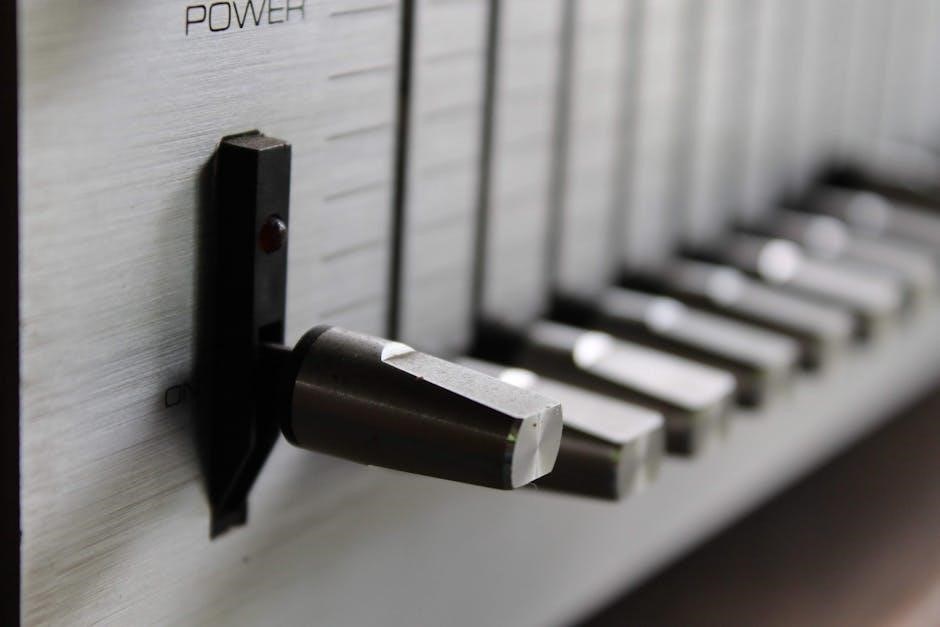
Additional Resources
Visit the official Troy-Bilt website to download the full manual and access parts diagrams. Sears Parts Direct offers additional resources and repair guides. Contact customer support for assistance.
7.1 Downloading the Full Manual
To download the full manual for your Troy-Bilt 3000 PSI pressure washer, visit the official Troy-Bilt website. Navigate to the “Support” or “Manuals” section. Enter your model number, which can be found on the unit or in the packaging. Follow the prompts to download the PDF version of the manual. Ensure your device has a PDF reader installed to view the document. This manual includes detailed safety information, operating instructions, and troubleshooting tips. If you encounter any issues, contact Troy-Bilt customer service for assistance. Always refer to the official source for the most accurate and up-to-date information.
7.2 Accessing Parts Diagrams
To access parts diagrams for your Troy-Bilt 3000 PSI pressure washer, visit the official Troy-Bilt website or authorized retailers like Sears Parts Direct. Use the model number located on the unit or in the manual to search for specific diagrams; These diagrams provide detailed illustrations of components, making it easier to identify and order replacement parts. You can also find exploded views of the pressure washer, which are helpful for understanding how parts fit together. Ensure you reference the correct model number to get accurate diagrams. This resource is invaluable for DIY repairs and maintenance, allowing you to locate and replace parts efficiently.
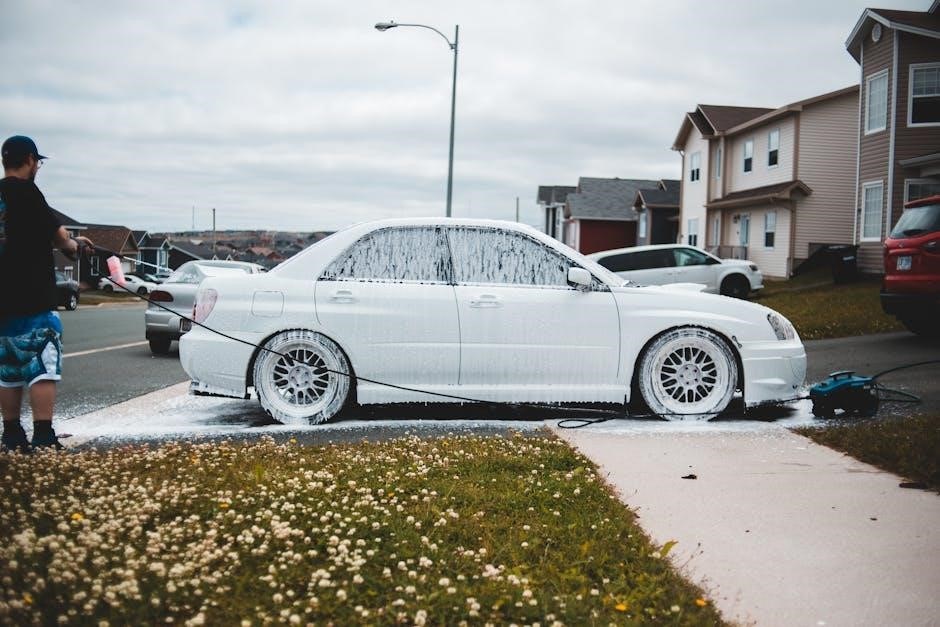
7.3 Contacting Troy-Bilt Customer Service
For assistance with your Troy-Bilt 3000 PSI pressure washer, contact customer service at (888) 611-6708 or visit their official website at www.troybilt.com. Representatives are available to help with troubleshooting, repairs, and parts inquiries. When reaching out, have your model number ready for faster service. The website also provides additional resources, including manuals and FAQs, to address common concerns. Troy-Bilt customer service is committed to ensuring a positive experience with their products. Whether you need technical support or general information, their team is available to assist you effectively. This support ensures your pressure washer operates optimally and extends its lifespan.
By following the manual’s guidelines and maintaining your Troy-Bilt 3000 PSI pressure washer, you’ll ensure optimal performance and longevity. Always prioritize safety and proper care. Happy washing!
8.1 Summary of Key Points
This manual provides a comprehensive guide for the Troy-Bilt 3000 PSI pressure washer, emphasizing safety, proper usage, and maintenance. Key points include essential safety precautions, product features, assembly steps, and operating instructions. Regular maintenance, such as checking fluid levels and lubricating components, ensures longevity. Troubleshooting common issues and understanding when to contact customer support are also highlighted. By following the guidelines, users can maximize efficiency and safety while extending the lifespan of their pressure washer. Always refer to the manual for detailed instructions and adhere to safety protocols for optimal performance and reliability.
8.2 Final Tips for Optimal Use
Regularly inspect hoses, nozzles, and connections for wear or damage to ensure peak performance. Store the pressure washer in a dry, protected area during off-seasons to prevent rust and corrosion. Always use the recommended fuel type and follow the manual’s guidelines for maintenance. For tough cleaning tasks, start with lower pressure settings and gradually increase as needed. Keep the unit balanced to avoid tipping and ensure stability while in use. Refer to the manual for part diagrams and troubleshooting if issues arise. By following these tips, you can extend the lifespan of your Troy-Bilt 3000 PSI pressure washer and maintain its efficiency for years to come.
